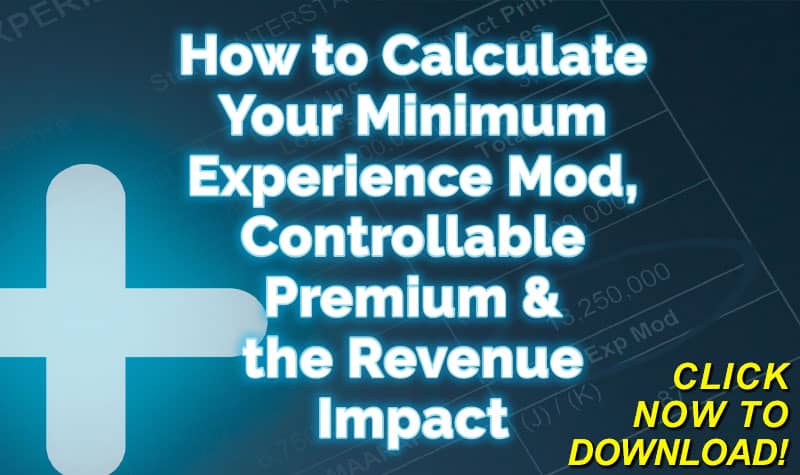Workers’ compensation coverage is required in all jurisdictions, but the methods to provide the coverage vary from self-insurance to workmans’ compensation insurance companies to state assigned risk pools to monopolistic states. Companies who do not have operations in a monopolistic state may wonder how does workers’ compensation operate in a monopolistic state.
In a true monopolistic state, the state government insures all employers through a compulsory state fund and is the exclusive provider of coverage. Instead of purchasing the workers’ compensation insurance coverage from an insurance company, the workers’ compensation coverage is provided by the state government. Open markets with competition from private workers’ compensation insurance companies is not permitted.
Over the last several decades the number of states classified as monopolistic states has dwindled from about twenty states 50 years ago to now just 4 states and two territories. The remaining jurisdictions in the monopolistic category are North Dakota, Ohio, Washington state, Wyoming, Puerto Rico and the Virgin Islands. In the last ten years three monopolistic jurisdictions, Nevada, West Virginia and Guam have switched from a monopolistic state program to a free market system of workers compensation insurance.
Click Link to Access Free PDF Download
“How to Calculate Your Minimum Experience Mod, Controllable Premium & the Revenue Impact”
The states of Ohio and Washington have loosen their monopolistic state grip on the workers’ compensation market in their states. While they do not permit workers’ compensation insurance companies to compete in their states, they do permit employers to set-up a self insurance program to handle their own work comp claims. However, the restrictions and strict requirements for self-insurance bar all companies except the financially strong large companies.
Wyoming is a monopolistic jurisdiction for hazardous operations and for other specific categories and for defined operations. If the employer does not fit into one of categories requiring the purchasing of workers compensation coverage from the state, then the employer has the option of using the state fund or purchasing coverage from a workers’ compensation insurance company.
North Dakota is the only state that meets the pure definition of a monopolistic state for workers compensation. There are no options for self insurance or to purchase workers compensation coverage from the private market. While there are a limited number of employers excluded (real estate agents, independent contractors, farm and ranch workers, domestic employees, newspaper delivery employees) from the workers’ compensation requirement, all other employers are required to have workers’ compensation insurance and are required to buy it from the State of North Dakota.
Ohio is the largest of the monopolistic jurisdictions. In 2009 the Ohio state fund had 132,549 work comp claims filed (down sharply from 159,611 in 2008 and 171,692 in 2007). Of the 132,549 claims filed, it approved 118,955 claims. Ohio had 257,012 employers covered by the state fund and 1,188 employers who were self-insured. The ratio of employers in the state fund to the employers who are self-insured is 216 to 1, reflective of the restrictions and requirements for a company to self-insured in Ohio.
Monopolistic jurisdictions provide risk managers or workers’ compensation managers of multi-state companies with challenges that are not faced in the other states and territories including:
- Making a separate purchase of coverage to provide workers’ compensation in each of the monopolistic jurisdictions where they have employees.
- Conflict of interest between the state work comp agency that handles the work comp claims and the state board or agency that handle claim dispute resolution.
- Providing work comp coverage for employees of a monopolistic state who perform work in other states.
- Providing work comp coverage for employees from other states who perform work in a monopolistic state.
- The monopolistic state agency does not provide employers’ liability coverage.
- Employee classification for premium rating is unique to each monopolistic state.
Basically, the risk manager or work comp manager has to learn a completely different system when they have work comp exposure in a monopolistic state.
The monopolistic jurisdictions due to their structure and the way the operate have their own issues to deal with. Some of the problems include:
- Political interest in the setting of work comp premium rates. The state agency is not in business to make a profit like a workers’ compensation insurance company. Hence, if the premiums are set too low, the state (make that the taxpayers of the state) get to subsidize the premium deficiency.
- With no competition, the quality of customer service and the quality of claim service can be lacking.
- The state agency is required to take all employers who apply. They cannot deny a policy to a poor risk like a workers’ compensation insurance company would do.
- Claim fraud is prevalent. Depending on whose stats you are looking at, work comp claim fraud is involved in an estimated 5% to 10% of all work comp claims. Remember the 118,855 approved work comp claims in Ohio in 2009? Ohio prosecuted only 222 cases of work comp fraud or less than two-tenths of one% of the claims filed.
How long the remaining monopolistic jurisdictions will continue is unknown. Politics in each of the monopolistic jurisdictions will determine whether or not the employers within their states will continue to purchase coverage from the state or if the market will be opened up to the competition. The free-market system of insurance companies competing for business has shown itself to be the better approach by creating better customer service and less red-tape for the employers.
Author Rebecca Shafer, J.D. Consultant, President, Amaxx Risks Solutions, Inc. has worked successfully for 20 years with many industries to reduce Workers’ Compensation costs, including airlines, healthcare, manufacturing, printing/publishing, pharmaceuticals, retail, hospitality and manufacturing. She can be contacted at: RShafer@ReduceYourWorkersComp.com or 860-553-6604.
WC Calculator: http://www.reduceyourworkerscomp.com/calculator.php
Do not use this information without independent verification. All state laws vary. You should consult with your insurance broker or agent about workers’ comp issues.




